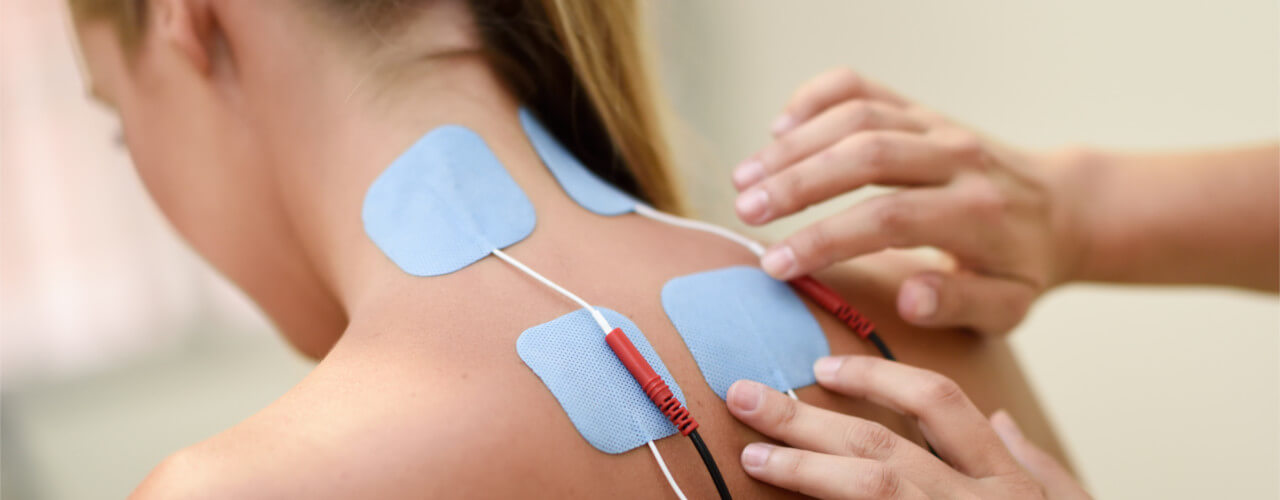Back
Technology in Treatment: A New Age for Pelvic Floor Therapy Modalities
By Dr. Zarina Vitebsky, DPT, MSPT, PRPC, TPS, LPF, DN on 9/12/2023

Introduction
The intersection of healthcare and technology has always been exciting. Pelvic floor therapy, a discipline that addresses an array of disorders ranging from incontinence to pain, is no exception. Innovations such as ultrasound, thermography imaging, and electric stimulation are not just improving diagnostics but are also revolutionizing treatment strategies. Dive in to uncover how these tools are setting new benchmarks in pelvic health.
1. Ultrasound in Pelvic Floor Therapy
Detailed Mechanism:
Ultrasound uses sound waves that bounce off tissues, producing echoes. These echoes create detailed pictures of areas inside the body. For pelvic health, these images unveil layers of muscle and connective tissues, which might be obscured in other imaging methods.
Muscle Assessment:
Muscle Dynamics: Beyond merely picturing muscles, ultrasound captures them in action, revealing involuntary spasms or weak contractions.
Hypothetical Case Study: A therapist may discover not only weakened muscles, but a cyst that was contributing to a patient's incontinence, underscoring ultrasound's diagnostic versatility.
Biofeedback Training:
Real-time Feedback: When a patient can view their muscles contracting and relaxing in real-time, it significantly enhances their understanding and boosts the efficiency of the exercises.
2. Thermography Imaging
How It Works:
Every cell in our body emits infrared radiation. Inflammation or other dysfunctions change this radiation pattern, which thermography detects.
Detecting Inflammation:
Understanding Patterns: Thermography offers patterns. A consistent hot spot, for instance, might suggest an undiagnosed inflammation or injury.
Hypothetical Case Study: A patient's treatment was altered after thermography detected more inflamed regions than initially assessed, leading to a more targeted treatment.
Monitoring Circulation:
Importance of Blood Flow: Proper blood flow ensures nutrient delivery and waste removal. Discrepancies in the expected temperature might suggest compromised blood flow, indicating muscle stress or potential tissue damage.
3. Electric Stimulation
A Deep Dive:
Electric stimulation or e-stim uses electrical pulses to mimic the action of signals sent by neurons. These pulses encourage muscles to contract, fostering strengthening and offering pain relief.
Muscle Strengthening:
Gradual Intensity: E-stim starts gently, with intensities gradually increasing as muscle strength and endurance improve.
Hypothetical Case Study: Post-surgery, a patient's progress was slow. Incorporating e-stim, they not only regained muscle control faster but also improved their muscle tone considerably.
Pain Relief:
Blocking Pain Signals: E-stim can interrupt pain signals sent to the brain, offering relief without medication.
4. Other Emerging Technologies:
Virtual Reality (VR) for Relaxation and Biofeedback:
Applications: Using VR, patients can be guided through relaxation exercises, helping alleviate muscular tension.
Hypothetical Case Study: Patient X, a software engineer, often worked long hours, leading to heightened pelvic tension. VR-guided exercises transformed their therapy sessions, providing relaxation beyond the clinic.
Wearable Sensors:
Daily Tracking: These offer insights into muscle activity during various activities, highlighting potentially problematic actions or postures.
5. The Future
As technologies advance, we'll see more personal, more precise, and more predictive tools. The fusion of technology and pelvic health holds a promising horizon. Pelvic Health Physical Therapy in Madison, New Jersey offers patients a wide variety of cutting-edge technology available for their specific treatment needs, including ultrasound, thermography imaging, electric stimulation, and more.
Conclusion
Incorporating technology into pelvic floor therapy holds promise not just for enhanced diagnostics but superior patient outcomes. With the rise of such advanced tools, patients can hope for shorter recovery times, better management strategies, and a deeper understanding of their conditions.
If you’re experiencing pelvic floor dysfunctions, please reach out to us at Pelvic Health Physical Therapy Center in Madison, NJ to set up an evaluation and treatment!
Feel free to call us at 908-443-9880 or email us at receptionmadison@pelvichealthnj.com.
Sources:
Read More:
How Chronic Pelvic Congestion in Men Contributes to Prostatitis By Shannon Strauch, PTA, STMT-1 on 12/11/2024 How lymphatic issues can cause symptoms of prostatitis Prostatitis and Tight Pelvic Floor Muscles: A Comprehensive Guide By Shannon Strauch, PTA, STMT-1 on 12/10/2024 How a tight pelvic floor can be the reason for prostatitis symptoms
Are you ready to live pain free?
Request An Appointment